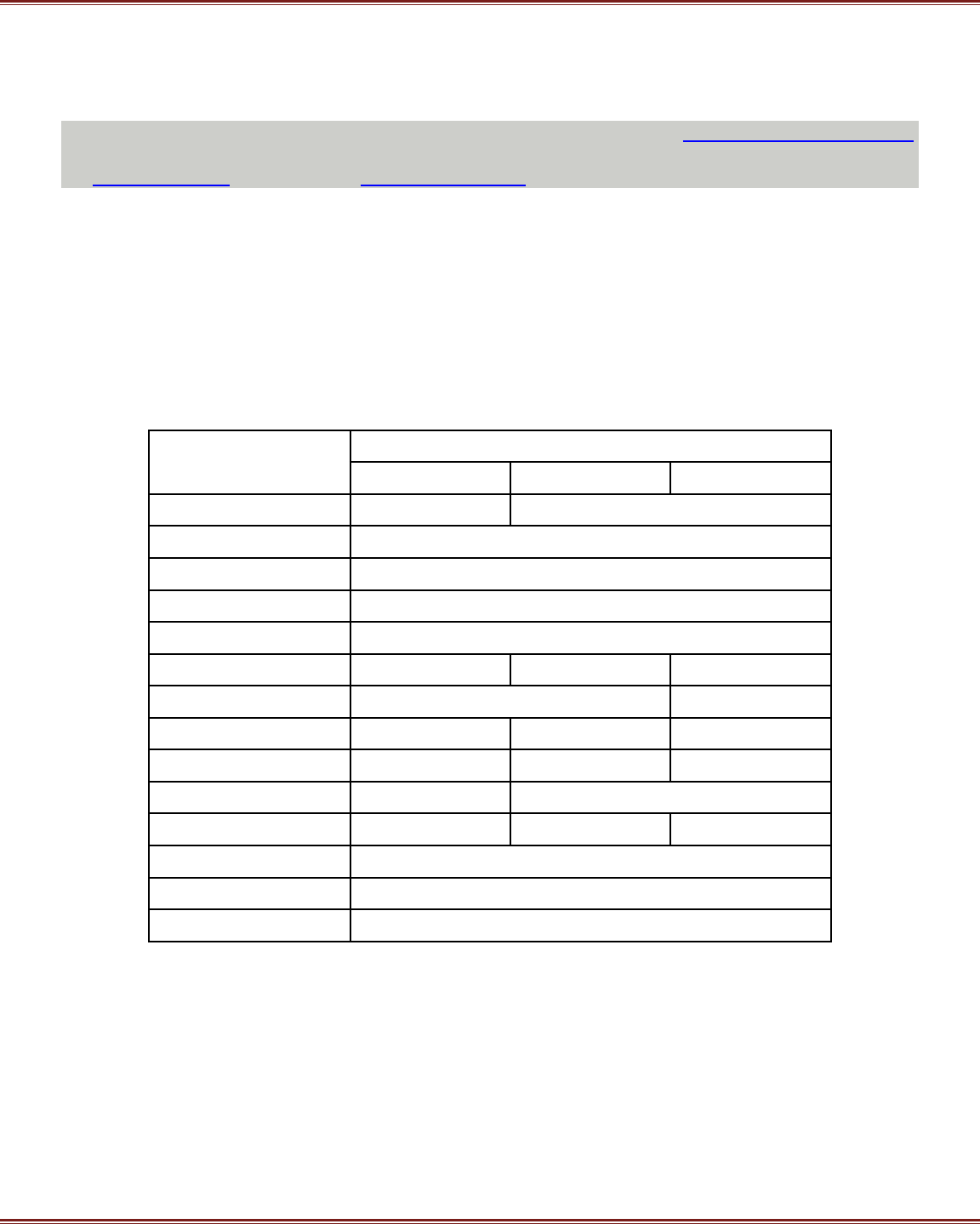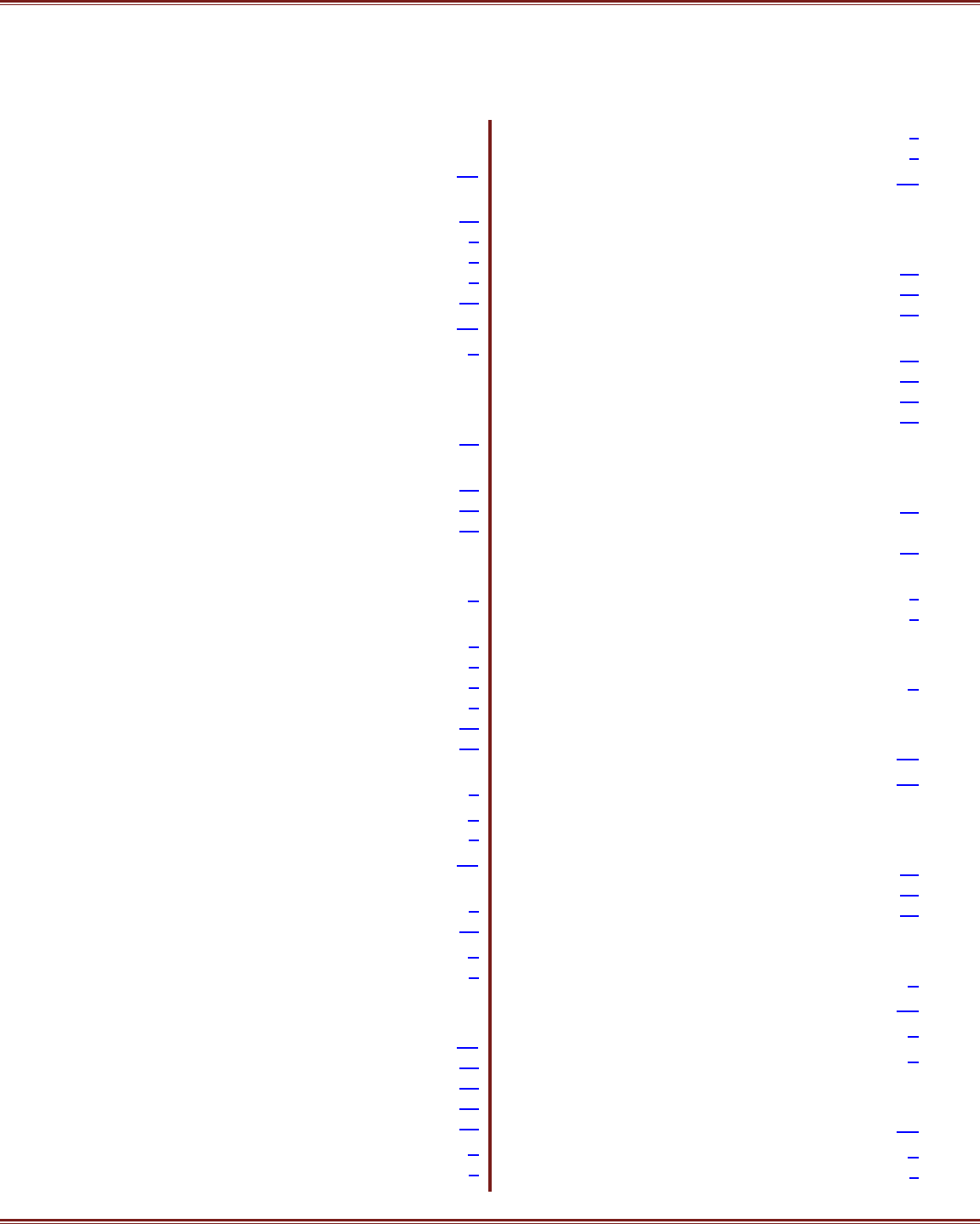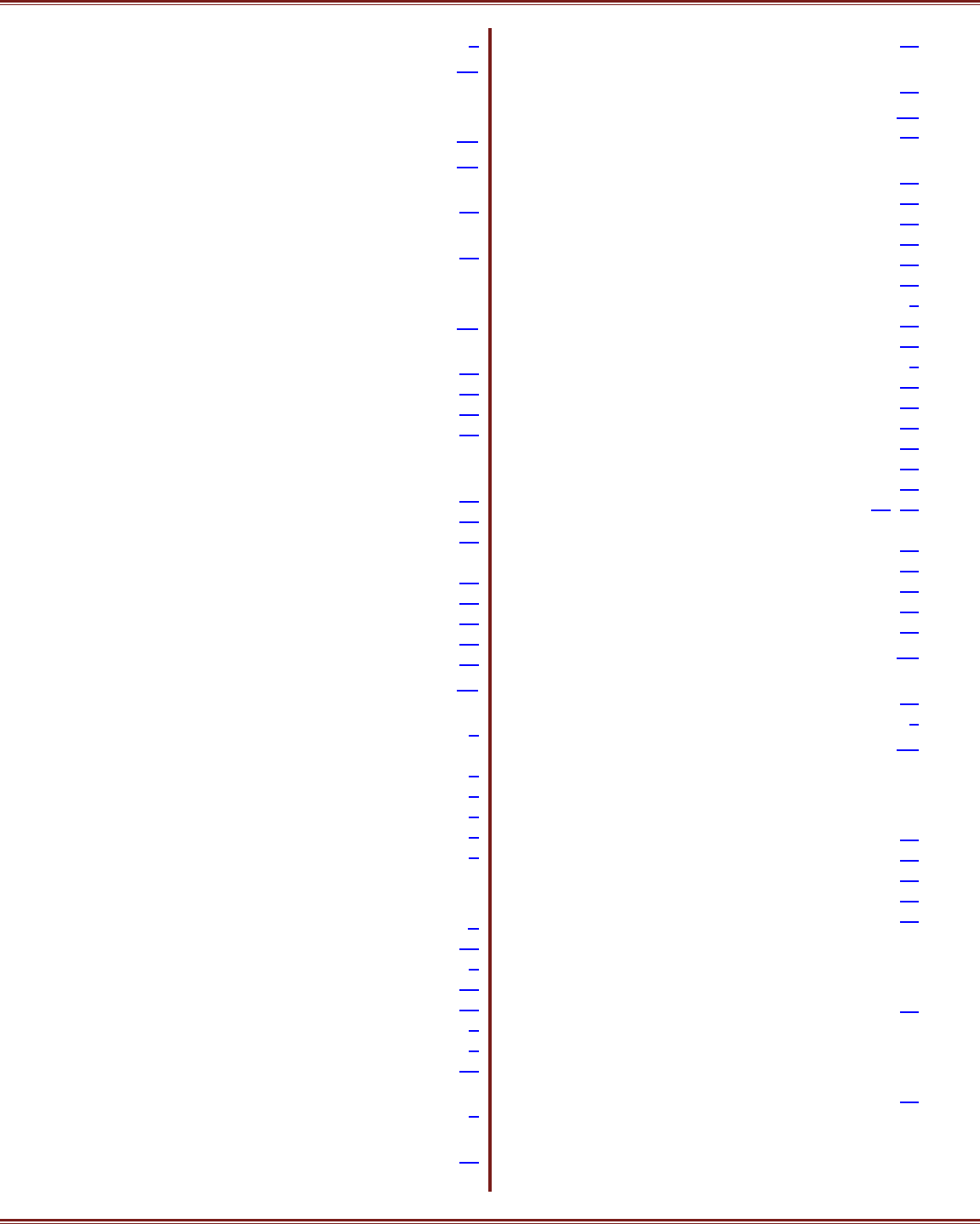
POLICIES AND GUIDELINES
Statistics

1
Introduction ���������������������������������������������������������������������������������������������������� 3
NCAA Statistics Compilation Guidelines ����������������������������������������������������������������������������������3
First Year of Statistics by Sport �������������������������������������������������������������������������������������������������4
School Code �����������������������������������������������������������������������������������������������������������������������������4
Countable and Noncountable Opponents ������������������������������������������������������ 5
Sport Implementation ��������������������������������������������������������������������������������������������������������������5
Rosters ������������������������������������������������������������������������������������������������������������ 5
Head Coach Determination ������������������������������������������������������������������������������������������������������5
Co-Head Coaches ���������������������������������������������������������������������������������������������������������������������6
Submitting Rosters �������������������������������������������������������������������������������������������������������������������6
Class Listing in Rosters �������������������������������������������������������������������������������������������������������������7
Death of a Student-Athlete or Head Coach�������������������������������������������������������������������������������7
Student-Athletes Dismissed from Team ������������������������������������������������������������������������������������8
Schedules �������������������������������������������������������������������������������������������������������� 8
Exhibition Games ���������������������������������������������������������������������������������������������������������������������8
Home/Away/Neutral Site Contests ������������������������������������������������������������������������������������������8
Entering Schedules �����������������������������������������������������������������������������������������������������������������10
Submitting Statistics ������������������������������������������������������������������������������������� 11
Submitting Single-Game Stat Files �����������������������������������������������������������������������������������������11
Reporting Statistics Regularly ������������������������������������������������������������������������������������������������11
Substantiation of Statistics �����������������������������������������������������������������������������������������������������11
Playing Rules ��������������������������������������������������������������������������������������������������������������������������11
Attendance Figures�����������������������������������������������������������������������������������������������������������������12
Length of Contests �����������������������������������������������������������������������������������������������������������������12
Extra-Inning, Extra-Period or Overtime Contests��������������������������������������������������������������������13
Suspended Contests ���������������������������������������������������������������������������������������������������������������13
Ofcial Statistics ������������������������������������������������������������������������������������������� 13
Career Statistics ���������������������������������������������������������������������������������������������������������������������13
CONTENTS

2
Football Statistics �������������������������������������������������������������������������������������������������������������������14
Changing Ofcial Statistics ����������������������������������������������������������������������������������������������������14
Postseason Records and Statistics ������������������������������������������������������������������������������������������15
National Rankings ���������������������������������������������������������������������������������������� 15
Declared Champions ��������������������������������������������������������������������������������������������������������������15
Ranking Minimums ����������������������������������������������������������������������������������������������������������������16
Statistical Rankings ����������������������������������������������������������������������������������������������������������������16
Records ��������������������������������������������������������������������������������������������������������� 17
Coaches’ Minimum-Seasons Requirement to Rank �����������������������������������������������������������������17
Consensus All-America Teams ������������������������������������������������������������������������������������������������18
Double-Doubles in Basketball �������������������������������������������������������������������������������������������������18
Streaks �����������������������������������������������������������������������������������������������������������������������������������18
Stat Plaques �������������������������������������������������������������������������������������������������� 19
Eligibility ������������������������������������������������������������������������������������������������������� 19
Ineligible Athletes ������������������������������������������������������������������������������������������������������������������19
Team Minimum-Games Requirement �������������������������������������������������������������������������������������19
Provisional Teams in Rating Percentage Index/NET and Statistics �����������������������������������������20
Reclassifying Teams in Rating Percentage Index/NET and Statistics ��������������������������������������20
Forfeits and Vacancies ���������������������������������������������������������������������������������� 21
Forfeits and Vacancies ������������������������������������������������������������������������������������������������������������21
Forfeit Scores �������������������������������������������������������������������������������������������������������������������������22
“No Contest” Declaration �������������������������������������������������������������������������������������������������������23
Appendix A — Statistical Plaque Categories ���������������������������������������������� 24
Index ������������������������������������������������������������������������������������������������������������� 28

NCAA STATISTICS POLICIES AND GUIDELINES INTrODUCTION
3
INTRODUCTION
The following compilation of statistics service policies and guidelines should not be considered a denitive
list� Some of the information is taken directly from the NCAA Manuals, and additional material is included
to help clarify inquiries the staff receives during the year� Sports information directors are encouraged to
alert us to other areas not covered in this document that could be added to future versions� Feel free to call
or email any time you have questions or concerns� Click here to see whom to contact�
NCAA STATISTICS COMPILATION GUIDELINES
All statistics reported to the NCAA should be compiled by the host institution press box/row statistics
staff during the contest� Any exceptions to these guidelines must clearly be documented with rationale
provided, explaining why in-contest statistics were not available� Numbers compiled by a coaching staff
or other university/college personnel using game lm after the fact will not be considered “ofcial” NCAA
statistics�
This does not preclude a conference or institution from making after-the-contest changes to press box/row
numbers� This is consistent with existing NCAA statistics policies involving corrections to any statistics
after a contest. Any changes to press box/row numbers must be obvious errors, such as misidentied
players, and this should not be interpreted as a way for press box/row statistics to later be “updated” by
coaching lms.
Judgment calls made by the ofcial statistician are NOT subject to change once the contest statistics have
been ruled nal unless a sport’s ofcial rules of the game specify different deadlines (e.g., 24 hours for
baseball or softball)�
Home statisticians are encouraged to consult with the visiting SID or coaching staff if a particular scoring
play or statistical interpretation can better be claried by understanding the team’s intent or philosophy.
Ideally, this will allow for any subsequent change in the statistics to be made before the team’s departure
from the facilities�
As a general rule, however, all other statistical changes (e.g., participation) should be made no later than
one week after the contest was played�
Host sports information directors should attempt to obtain adequate statistical stafng to provide all
competing institution(s) with full game statistics for every contest, understanding that some institutions
may have limited resources and/or nances. If full statistical coverage is not possible, it is the responsibility
of the host sports information ofce to alert the visiting institution(s) before the contest(s) to allow those
institutions to make appropriate arrangements�
Statisticians are reminded that NCAA policy does not permit changes to away-game statistics unless
approved by the host sports information director. Conference ofces also should monitor any statistical
changes, especially involving nonconference road contests, to ensure that all have been sanctioned by the
home statistician�
It is important to note that this policy applies ONLY to ofcial NCAA statistics and national rankings and
does not mean a coaching staff or other personnel cannot compile separate statistics for institutional use�
Those compilations also could appear in the institution’s press releases and/or on its website as long as
they are not identied as ofcial statistics used by the NCAA.

4
NCAA STATISTICS POLICIES AND GUIDELINES INTrODUCTION
The NCAA media coordination and statistics staff reserves the right to review any statistics provided to
the national ofce and may withhold publishing/posting those numbers until their accuracy can been
substantiated�
NOTE: These guidelines have been approved and endorsed by the NCAA Media Coordination and Statistics
Advisory Board, as well as the NCAA media coordination and statistics staff�
FIrST YEAr OF STATISTICS BY SPOrT
The following chart shows the rst year the NCAA statistics department began compiling statistics in each
sport�
Sport
Implementation Year
Division I Division II Division III
Baseball 1957 1963 1974
Men’s Basketball 1947-48 1973-74
Women’s Basketball 1981-82
Field Hockey 2006
Football
FBS - 1937
FCS - 1978
1948 1973
Men’s Ice Hockey 1995-96 1995-96
Women’s Ice Hockey NC - 2000-01 2001-02
Men’s Lacrosse 1996
Women’s Lacrosse 1996 1998 1996
Men’s Soccer 1998
Women’s Soccer 1998
Softball 1982
Men’s Volleyball NC - 2009 2009
Women’s Volleyball 1994
SCHOOL CODE
The NCAA school code is the numerical ID assigned to each NCAA and non-NCAA institutions� The school
code is used to log into the statistics website and when referencing an opponent� To see an up-to-date
listing of the school codes, please go to stats�ncaa�org/game_upload/team_codes�
NOTE: When uploading your les, whether by a service provider or through the statistics websites, you
must use the correct school codes. If an incorrect code is used, the le will NOT be loaded.
(Updated
7/1/2015)

NCAA STATISTICS POLICIES AND GUIDELINES rOSTErS
5
COUNTABLE AND NONCOUNTABLE OPPONENTS
(Updated 08/02/23)
For up-to-date information on noncountable opponents, please review the Countable Opponents Policy,
which includes the noncountable opponents list� If there is an institution not listed on the below list or on
the NCAA Codes List, please contact mwatsky@ncaa�org and we will research the institution�
SPOrT IMPLEMENTATION
When a school joins the NCAA, all of its historical teams’ and coaches’ won-lost records as a varsity team
of a four-year college count toward their all-time records. However, these won-lost records are subject to
complying with the NCAA’s policies for countable opponents and are retroactive to the rst year each sport
established a policy as shown on the following chart�
The following chart shows the rst year each sport implemented the countable opponents’ policy.
Sport
Implementation Year
Division I Division II Division III
Baseball 1953 1963
Men’s Basketball 1952-53
Women’s Basketball 1981-82
Field Hockey 1981
Football 1952
Men’s Ice Hockey 1952-53 1977-78 1983-84
Women’s Ice Hockey 2000-01 2001-02
Men’s Lacrosse 1971 1974 1980
Women’s Lacrosse 1982 2001 1985
Men’s Soccer 1959 1972
Women’s Soccer 1982 1988 1986
Softball 1982
Men’s Volleyball 1970
Women’s Volleyball 1981
ROSTERS
HEAD COACH DETErMINATION
For a coach to be credited with wins, losses or ties, that individual must be designated as the institution’s
head coach or interim head coach� Individuals serving on an advisory or preseason basis may not be
credited with the wins, losses or ties� If the head coach is not present at a contest due to illness or other
unexpected circumstances, or otherwise is unable to complete the sport season, it is the responsibility of

6
NCAA STATISTICS POLICIES AND GUIDELINES rOSTErS
the institution to determine, preferably before the contest, whether the win, loss or tie for that contest
shall be credited to the head coach or to an interim or assistant coach� If the decision is made after the
season is over, consider if the new coach inuenced the team enough to make a difference in how the
team performed (such as style of play). If a coach is no longer employed by the institution as the head
coach, that coach can no longer be credited with further wins or losses after the day the relationship was
terminated�
● The following are examples from Division I men’s basketball teams that have been in the NCAA
tournament� The circumstances and institutions’ decisions are as follows:
● In 1989, Rich Daly coached Missouri in the tournament after Norm Stewart became ill and was
hospitalized late in the season� Missouri credited Stewart for the entire season�
● Also in 1989, Steve Fisher coached Michigan in the tournament after Bill Frieder took a job at
Arizona State between the regular season, and the postseason� Michigan split the won-lost record
and Fisher was credited with the tournament games and a national championship� NOTE: On
Fisher’s ofcial record, he will be credited with one season coached and a 6-0 record.
● In 1995, Mike Krzyzewski had coached Duke to a 9-3 record before having back surgery and
missing the remainder of the season� As determined by Duke before interim coach Pete Gaudet
coached a game, Gaudet received all the wins and losses for the remainder of the season�
● In 2001, Rick Majerus coached Utah in its rst game of the season and had to miss the rest of the
season because of his own health problems and concerns for his mother’s health. Utah credited the
rest of the season to interim head coach Dick Hunsaker�
● Also in 2001 at Arizona, the wife of Lute Olson passed away, and Olson took a leave of absence for
an undetermined amount of time� Since it was not known if Olson would return at all that season,
Arizona decided to credit the interim coach, assistant Jim Rosborough, with any games played
during Olson’s absence. Olson missed ve games, and Rosborough was credited with a 3-2 record
while Olson’s record was 25-6 for the games before and after his leave�
Generally, if a coach misses a game or limited amount of games due to a temporary illness, transportation
trouble, etc�, the wins or losses by the team in the coach’s absence will usually go to the head coach�
(Updated 5/1/2014)
SUSPENDED COACH
If a head coach is suspended for a game or more by the school or conference, the coach is still eligible
to receive the wins or losses during the absence, but some institutions have chosen to give the record to
the interim coach� If a head coach is suspended by the Committee on Infractions and/or Independent
Accountability Resolution Process, the coach will not receive credit for the wins or losses; those decisions
will go toward the interim coach’s record� Other unique circumstances will be evaluated on a case-by-case
basis�
(Updated 5/1/2014)
CO-HEAD COACHES
Both coaches must be declared co-head coaches by the institution before the season begins OR at the time
of a coaching change� Both co-head coaches will be credited with the team’s won-lost record�

NCAA STATISTICS POLICIES AND GUIDELINES rOSTErS
7
SUBMITTING rOSTErS
For directions on submitting rosters please go to fs�ncaa�org/Docs/stats/ForSIDs/RosterInstructions�pdf�
(Updated 9/8/2017)
ADDING A PLAYEr
● Click the “Add More Player(s)” button at the bottom of the roster page. A screen will appear,
allowing you to add up to 10 new players at a time� NOTE: All player names should be entered
with proper cases (for example: John Doe).
● Enter the information for each player and click the “Update” button, then the “Submit” button,
which will take you back to the main roster screen�
● If you have more than 10 players to add, you will need to repeat the process�
FINAL STEP
● To ensure that the entire roster is listed, either click the “Jersey #” heading to sort the roster listed
numerically or click the “Name” heading to sort the roster alphabetically�
● Once you have completed the roster, click the “Submit” button to update it in the NCAA database�
● You can either “Log Out” by clicking in the top right or return to your school’s main menu options
by clicking on “Click here�”
DUrING THE SEASON
● During the season, you may make changes to player information (change of position, change of
height, name, etc�) as well as add players to the roster using the methods above�
● NOTE: If a player is included on the statistical software roster loaded for any game, while they
may not compete in the game, that player cannot be deleted from the season statistics�
● NOTE: If a player has statistics, leaves a team, and a new player assumes the former player’s
uniform number, give the former player a number not associated with the team roster and then
give the other player the former’s old number� Example: Player A, No. 15, played in ve games
this season and left the team� Player B, No� 23, will wear No� 15 going forward� Change Player
A’s number to 99 (if no 99 exists on the team), and change Player B’s number to 15.
(Updated
01/02/2022)
CLASS LISTING IN rOSTErS
A student-athlete’s class (Fr., So., Jr., Sr.) should always be listed by eligibility on rosters to be used by
NCAA statistics� For example, a player who is a sophomore academically but redshirted their freshman year
should be listed on the roster as a freshman since the player still has four years of eligibility remaining� A
graduate student in the last year of eligibility should be listed as a senior�
DEATH OF A STUDENT-ATHLETE Or HEAD COACH
If a student-athlete in the national rankings dies during the season, the student-athlete’s statistics shall be
dropped from the rankings immediately unless the student-athlete already played in enough contests to
qualify for the nal ranking for that team’s full season.

8
NCAA STATISTICS POLICIES AND GUIDELINES SCHEDULES
If a coach dies during the season, the coach's won-lost record shall be nal at the time of death. The
new head coach or interim coach as determined by the institution then will be credited with the team’s
remaining wins and losses�
STUDENT-ATHLETES DISMISSED FrOM TEAM
If a student-athlete is dismissed from a team before the end of the season, the name of the student-athlete
must remain on the roster and in the statistics if that student-athlete participated in any contests during
the season� If the student-athlete did not appear in any contests, then the school may make a request to
the NCAA statistics department that the name be stricken from the roster�
SCHEDULES
EXHIBITION GAMES
A contest must be counted by both teams as an ofcial contest for purposes of won-lost records and
team and individual statistics unless both institutions agree in writing before the game that it is to be an
exhibition contest� If it is an exhibition contest, the win or loss and team and individual statistics should
not be counted� For exceptions in Divisions II and III, please reference the NCAA divisional manual for
specic information.
(Updated 01/06/2016)
For purposes of national statistics, games played during the nontraditional season of a sport shall not be
included in a team’s won-lost record and statistics� Example: LSU plays Tulane in baseball in October
during its fall schedule� Since the traditional season for baseball is the spring, these games do not count in
either team’s baseball won-lost record or statistics�
HOME/AWAY/NEUTrAL SITE CONTESTS
(Updated 9/8/2017)
The following guidelines and examples are for regular-season and postseason contests�
Team A is playing Team B� For results and the Rating Percentage Index/NET, the contest is considered
a home contest for Team A and an away contest for Team B if the site:
● Is the regular home site for Team A�
Example: The Tennessee softball team is hosting a tournament and is listed as the visitor for its
game with Ball State. It is considered a home game for Tennessee since it is still its home eld.
● Is rented by Team A, and Team A, regardless of the opponent, arranges for ofcials, controls the
tickets (and the game is part of the season ticket package), and is responsible for game operations.
Example: Penn State rents Subaru Park for a men’s soccer game against Temple� Penn State will
handle game-day operations and arrange for ofcials. Even though the stadium is in Temple’s
home city, it is a home game for Penn State�
● Is in the same city or a reasonable distance within the metropolitan area of Team A, and its
opponent, Team B, is from outside the metro area�

NCAA STATISTICS POLICIES AND GUIDELINES SCHEDULES
9
Example: The Butler women’s basketball team has a scheduled home game against Indiana
at Hinkle Fieldhouse� To attrack a larger crowd, Butler agrees to play the game at Gainbridge
Fieldhouse, which is a few miles away from campus� It is still considered a home game for Butler�
● Is in the same city or a reasonable distance within the metropolitan area of both teams and one
team, Team A, is designated as the home team and includes the game in its season ticket package�
Example: The Washington women’s soccer team is hosting a game against Seattle� The game
is moved to Lumen Field, in both team’s metro area, to accommodate a larger crowd� Because
Washington was designated the home team initially and the game was included in the season ticket
package, it is still a home game for Washington, even though both teams are located in Seattle�
● Is in the same area as Team A and Team A plays some or several home games there each season�
Often these games are included in the season ticket package offered by the school�
Example: The UConn men’s basketball team plays some of its home games in its hometown of
Storrs; however, the Huskies play most of their games in nearby Hartford� Both sites are considered
home sites�
● Is in a city close by Team A and Team A designates the game as a home game that will count in its
home attendance� The game is also included in the season ticket package offered by the school�
Example: Ole Miss men’s basketball team plays a game every two to three years in Tupelo,
Mississippi, which is 48 miles away from Oxford� Ole Miss always counts it as a home game and
includes the game in its season home attendance�
● Is a temporary home site while the regular home site for Team A is being renovated�
Example: McGaw Hall on the Northwestern campus is being renovated, which forces the
Northwestern basketball teams to move all their home games from Evanston to nearby Chicago
and play in DePaul’s home arena� These games are considered home games for Northwestern since
that is where the Wildcats are playing their scheduled home games during the renovation�
● Is a nearby temporary emergency site while the regular home site for Team A is being repaired�
Example: Owensboro Sportscenter at Kentucky Wesleyan was damaged in a tornado� This forces
Kentucky Wesleyan to move its basketball home game with Southern Indiana to a nearby high
school gymnasium while the Sportscenter is being repaired� Since this game was played in a
nearby temporary setup, it is still considered a home game for Kentucky Wesleyan� However, if no
area arenas or gymnasiums are available and the game is moved the 40 miles away to Southern
Indiana’s home court, then the game is now considered a home game for Southern Indiana�
Team A is playing Team B� For results and RPI/NETs, the contest is considered a neutral-site contest
for both teams if the site:
● Is at another school that is hosting a tournament�
Example: The Wisconsin women’s volleyball team is hosting a tournament in Madison� Colorado
and Arizona State play each other in a match during that tournament� It is a neutral site game for
both teams� However, if one of those teams were to play Wisconsin, it would be a home game for
Wisconsin�
● Is a venue other than Team A’s and Team B’s home venue and is hosted and organized by a third
party�

10
NCAA STATISTICS POLICIES AND GUIDELINES SCHEDULES
Example: The LSU and Brigham Young football teams are scheduled to play in the Aac Kickoff
game at Mercedes-Benz Stadium in Atlanta� The game is considered a neutral-site game because
the Chick-l-A Peach Bowl organized the game and handled all game-day operations.
● Is at another school that is hosting a tournament, even though Team A is from the same metro area
as the host school and Team B is not�
Example: The Temple women’s lacrosse team is hosting a tournament, and Villanova plays a game
against Auburn� Although Temple and Villanova are both in Philadelphia, since Temple is hosting
the tournament on its campus site, only games involving Temple would have a home site� All other
games would be counted as neutral-site games�
● Is in the same city or metropolitan area of both teams and is not the home site for either team�
Example: The SMU women’s basketball team is playing TCU at the American Airlines Center in
Dallas, which neither team uses as its regular home site even though both teams are from Dallas�
It’s a neutral-site game for both teams. The only exception is if SMU was scheduled to host the
game and decided to move it to the American Airlines Center to accommodate an expected larger
crowd. Then it is a home game for SMU.
● Is in the same city or metropolitan area of both teams and is the home site of another team�
Example: Kennesaw State and Georgia State are playing each other in a women’s volleyball
tournament on the campus of Georgia Tech� It is a neutral-site match for both teams�
● Is not in the metropolitan area for either team�
Example: The city of Denver is the site for a softball game between Southern Colorado of Pueblo
and Air Force of Colorado Springs� It’s a neutral site game for both teams�
● Is a site used for a conference tournament that is not a regular home venue for a conference
member�
Example: The Sun Belt Conference hosts its postseason men’s basketball tournament at the
Simmons Bank Arena in North Little Rock, Arkansas� Because no conference team uses the arena
for its home games, it is a neutral site for all teams�
Since the determination of home/away and neutral site games can sometimes be a complicated
issue, a school can appeal to the NCAA for exceptions to the rule�
Example: Butler’s men’s basketball team is playing Indiana at Gainbridge Fieldhouse� While it
may look like a home game for Butler since the arena and the team are located in Indianapolis,
contracted the game with Butler and rented the arena, and the Big Ten conference assigned the
game ofcials. The game is not part of either team’s season ticket package, but both teams included
the game as an option with the season tickets for priority purchasing� In this case, the game will be
designated as a neutral site game�
For purposes of attendance, some games considered home and away in the RPI/NET may be switched
to neutral site games, and vice versa� For example, in Division I baseball, for RPI/NET purposes only,
all conference tournament games are considered neutral-site games for all teams, even for the host team�

NCAA STATISTICS POLICIES AND GUIDELINES SUBMITTING STATISTICS
11
ENTErING SCHEDULES
ADDING SCHEDULES FrOM WEBSITE PrOVIDErS
For directions on adding a schedule using Presto or Sidearm, please go to fs�ncaa�org/Docs/stats/ForSIDs/
ScheduleInstructions�pdf�
(Updated 9/8/2017)
WEBSITE
● To access the NCAA schedule page, go to the NCAA statistics site at https://stats�ncaa�org/login�
● Enter your username (school code) and password.
● Find the sport you wish to update, and click on the “Schedule” hyperlink�
ADDING A SCHEDULE
For directions on entering a schedule using the NCAA statistics site, please go to fs�ncaa�org/Docs/stats/
ForSIDs/ScheduleInstructions�pdf�
(Updated 9/8/2017)
SUBMITTING STATISTICS
SUBMITTING SINGLE-GAME STAT FILES
Single-game stat les (XMLs) are used to create weekly statistical rankings and populate results in the
RPI/NET and Score Reporting systems. XML les need to be uploaded to https://stats�ncaa�org/login
via the “Game Reports” link, which will become active on the rst allowable date of competition for each
sport� Files may be uploaded at any time, but must be submitted by the weekly deadlines through the
conclusion of the championship�
For directions on creating an XML le please go to www�statcrew�com/faqs/gamexml�pdf, and for directions
on uploading an XML le, please go to fs�ncaa�org/Docs/stats/ForSIDs/DailySubmitInstr�pdf�
rEPOrTING STATISTICS rEGULArLY
For a member institution to be eligible for either an individual or a team national statistics title, it shall
have led reports with the national ofce on a regular basis.
SUBSTANTIATION OF STATISTICS
Filing a statistics report does not ensure automatically a member institution’s inclusion in the NCAA’s
national statistics rankings. The report shall be mathematically accurate. Unusual statistics that cannot be
promptly supported will not be included in the rankings� The NCAA shall withhold such reports from the
ranking until an appropriate ofcial of the member institution involved submits a satisfactory explanation
and substantiation of the statistics�

12
NCAA STATISTICS POLICIES AND GUIDELINES SUBMITTING STATISTICS
PLAYING rULES
For a contest to be counted in an institution’s record and statistics, institutions must follow NCAA Bylaw
17�32, which states that a member institution shall conduct all intercollegiate competition in accordance
with the NCAA playing rules in all sports for which the NCAA develops playing rules�
(Added on 1/31/2014)
ATTENDANCE FIGUrES
Attendance gures for ofcial box scores and/or NCAA reports can be calculated by turnstile count, tickets
sold or estimates. NCAA championship tournament gures always are compiled by tickets sold. Schools
should make every effort to record an attendance gure on each statistical box score it produces. For
baseball and softball doubleheaders, please use one attendance gure (the higher of the two games) and
count it as one date or session�
(Updated 5/5/2015)
For doubleheaders involving the men’s and women’s teams, the attendance gure should be taken by
halftime of the rst game for it to count on that team’s season home attendance. If no gure is taken for
the rst game, do not count the game in that team’s season home attendance.
When there is one gate charge for two or more games, this is considered a session and should have only
one attendance gure for all games of that session. If two or more games are played and there is no
admission price, an attendance turnstile count or estimate should be made for each game individually�
If a team is hosting a regular-season tournament, conference tournament or postseason NCAA tournament
at its regular home site, the attendance gure should be included in its full season home attendance for
each game or session in which that host team participates� If a team is hosting a regular-season tournament,
conference tournament or postseason NCAA tournament at a facility close by, the attendance gure can be
included in its full season home attendance for each game or session in which the host team participates
if the institution so chooses�
If a team moves a scheduled home game from its regular home site to another facility close by, that
attendance can count on the team’s home attendance� Some teams have multiple dates at an off-campus
facility that they consider to be home games� These games also can be included in home attendance�
While season tickets for a particular sport can be included in a team’s attendance if counting by tickets
sold, all-sport season tickets cannot be counted this way� People attending games with an all-sport season
ticket can be counted if attendance is compiled by turnstile or estimate, but not if determined by tickets
sold�
For a team to rank among the attendance leaders nationally, it is required to have a minimum amount of
home games for the season� That minimum will vary from sport-to-sport and/or year-to-year depending
on circumstances�
LENGTH OF CONTESTS
If a contest does not reach its full conclusion but a winner and loser, or a tie, are determined by the
game ofcials and/or the competing institutions at the site in accordance with the rules of the game,
then the win, loss, tie, score of the game, and all individual and team statistics will count toward game,
season, career and all-time totals. This does not include games declared by the game ofcials at the site as
forfeited or determined as no contest� However, some forfeited games may count in individual and team
statistics if the game had reached a reasonable conclusion as stated in these policies under Forfeit Scores
on page 22�

NCAA STATISTICS POLICIES AND GUIDELINES OFFICIAL STATISTICS
13
In baseball and softball, please refer to the respective playing rules as more than one condition may apply�
(Updated 2/13/2017)
EXTrA-INNING, EXTrA-PErIOD Or OVErTIME CONTESTS
Statistics from extra periods, overtimes and extra innings are included in the contest’s total statistics�
SUSPENDED CONTESTS
When a contest is started and then is halted for any reason (such as weather), if that contest is then
suspended and later resumed at the point of the suspension and played to conclusion, the ofcial date
and site of the contest should be listed as the original date and site� If the contest is restarted from the
beginning, then the ofcial date and site of the contest should be listed as when and where the new contest
was played�
Example: The Ball State baseball team is hosting a home game in Muncie on March 30 against Butler�
With Ball State holding a 4-2 lead at the end of three innings, the rains hit, and the game is halted� Ball
State was already scheduled to play at Butler in Indianapolis on April 15� A) The game is never resumed�
B) The game is resumed in Indianapolis on April 15 in the fourth inning with the same score and lineups
and played to conclusion before the two teams play the additional scheduled game� C) The game is not
resumed but is started from the beginning as part of a doubleheader on April 15 in Indianapolis� RULING:
A) No contest and no statistics are counted in the season totals. B) The rst game shall be listed as having
been played as a Ball State home game March 30 in Muncie� The second game shall be listed as a Butler
home game April 15 in Indianapolis� C) Both games shall be listed as Butler home games on April 15 in
Indianapolis� No statistics that occurred March 30 are counted in the season totals�
Note: If a team or individual streak is involved, the streak shall be continued or halted according to the
ofcial date and site of the game.
Example: Heading into the March 30 game, Ball State had a home eld winning streak of 11 games,
and Butler had a player, Joe Jones, who had a 16-game hitting streak� In: A) and C) The streaks are not
affected by the March 30 game� B) If Ball State won the suspended game, it would be number 12 in the
home winning streak� If Ball State lost the suspended game, the home winning streak would end at 11� If
Jones got a hit in the suspended game, his streak would continue at 17� If Jones failed to get a hit in the
suspended game, his streak would end at 16� In both cases if the streaks were continued, they would be
affected by the games after that March 30 date�
OFFICIAL STATISTICS
The statistics produced by the home team should be considered the ofcial account of the contest. The
statistics should contain the complete report for both the home and visiting teams� Whatever categories
are kept for the home team should also be kept for the visiting team� If the home team cannot produce the
complete visiting team statistics, then the home team SID must contact the visiting team SID far enough
in advance of the start of the contest that the visiting team SID can make proper arrangements to have the
visiting team’s statistics kept�

14
NCAA STATISTICS POLICIES AND GUIDELINES OFFICIAL STATISTICS
CArEEr STATISTICS
For career record purposes, a player’s statistics are recognized by the Association only for the years for
which the individual’s institution was a full-edged member of the Association. In the event an individual’s
institution changed divisions while a member, career statistics for the individual are credited only in the
division in which the individual actually competed each year. The player’s full career statistics (while
competing for full-edged member institutions) are recognized in the collegiate records category, however.
All ofcial games played count toward an athlete’s career statistics including games played in a redshirt
season� Example: Joe plays the rst six games of the basketball season his sophomore year and then
breaks his ankle� Joe doesn’t play the rest of the season but is awarded a redshirt and has three more years
of eligibility left. These six games would count in Joe’s career statistics, and he will be credited with ve
years of playing if he plays in ve different seasons.
For career categories ranked by averages or percentages, a student-athlete is not eligible to appear in such
categories until the individual's career is completed� For career categories ranked by a total number, a
student-athlete may appear once the athlete has reached the minimum to rank�
FOOTBALL STATISTICS
Before the 2002 season, bowl games and NCAA playoff games were not included in any team or individual
single-game, season or career records� Starting with the 2002 season, all games excluding exhibitions
count toward the statistics and won-lost records for all divisions�
DEFENSIVE
Effective with the 2004 football season, all individual defensive statistics reported to the NCAA must be
compiled by the press box statistics crew during the game� Defensive numbers compiled by the coaching
staff or other university/college personnel using game lm will not be considered “ofcial” NCAA statistics.
This policy does not preclude a conference or institution from making after-the-game changes to press box
numbers� This is consistent with existing NCAA policies involving corrections to any offensive statistics
after a contest. Any changes to press box numbers must be obvious errors such as misidentied players,
and this should not be interpreted as a way for press box statistics to be later “updated” by the coaching
lms. Changes should be made within one week of the game played. Statisticians also are reminded
that NCAA policy does not permit changes to away-game statistics unless approved by the home sports
information director�
It is important to note that this policy applies ONLY to ofcial NCAA statistics and national rankings and
does not mean a coaching staff still cannot compile separate defensive statistics for institutional use� Those
compilations also could appear in the institution’s press releases and/or on its website as long as they are
identied as coaching lm numbers rather than ofcial statistics as used by the NCAA.
The NCAA media coordination and statistics staff reserves the right to review any statistics provided to
the national ofce and may withhold publishing/posting those numbers until their accuracy can been
substantiated�

NCAA STATISTICS POLICIES AND GUIDELINES OFFICIAL STATISTICS
15
CHANGING OFFICIAL STATISTICS
When an error or discrepancy in the ofcial statistics is discovered after a contest has concluded and the
ofcial statistics have been distributed, the following procedure should be used. NOTE: All changes to the
ofcial statistics MUST come from school SIDs.
(Updated 04/26/2016)
For more specic information on when ofcial statistics may be changed, please see NCAA Statistics
Compilation Guidelines on page 3�
(Updated 11/13/2017)
If the sports information director of the home team discovers the error, that SID must alert the visiting
team SID of the change and conrm them with the visiting team SID as soon as possible. If applicable, the
home SID also must send a copy of the changes to the conference ofce as soon as possible.
If the visiting SID needs to make a change in the nal statistics, the SID must contact the home team’s SID
as soon as possible. If the home team SID agrees, then the home team SID must conrm the changes to the
visiting SID and send a copy to the visiting SID and conference ofce (if applicable). (
Updated 10/31/2013)
If the home team SID disagrees with the change, then the visiting SID must accept the nal statistics as
listed by the home team� The visiting team SID cannot alter any statistics without the consent of the home
team SID� There is no further appeal� However, if the game was televised and/or recorded, and the dispute
does not involve a judgment call, the box score should be corrected if there is indisputable visual evidence.
Example: If an ofcial scorer in basketball credited the wrong player with a free throw made and the
recording clearly shows a different player shooting, then the correct player should be credited with the
free throw made and attempted� If the dispute is whether there was an assist on a certain play, this is a
judgment call, and the ofcial box score should stand as is.
Another example: In soccer, if a player was given credit for a goal scored but the recording shows clear
visual evidence that another player actually scored the goal, then the ofcial box score should be changed
to reect the correction.
In all cases in all sports, if a change is to be made, the SID making the change must inform the other SID
as soon as possible after the event or game has been played�
BASEBALL AND SOFTBALL
In baseball or softball, the ofcial scorer has just 24 hours to make a change on a judgment call (e.g., hit or
error). If the change in baseball or softball is for something other than an ofcial scorer’s judgment, then
the SID must follow the above procedures and do so as soon as possible�
POSTSEASON rECOrDS AND STATISTICS
Postseason contests including conference and/or NCAA tournaments, or bowl games in football, shall be
included in the ofcial records and statistics for all sports�

16
NCAA STATISTICS POLICIES AND GUIDELINES NATIONAL rANkINGS
NATIONAL RANKINGS
DECLArED CHAMPIONS
If a player has participated in less than the required percentage of the team’s games, but the player’s per-
game average still would be highest in the nation if charged with the necessary required games, the player
shall be declared champion�
In some cases, a player has participated in more than the required percentage of contests but is just short
of meeting another minimum required for a statistical category� If the additional numbers are added in
the most negative way to meet the minimum requirement and the player’s per-game average still would
be highest in the nation, the player shall be declared champion� Example: In baseball or softball batting
average, if a player is just ve plate appearances short of qualifying, then add ve at bats with no hits. In
football passing efciency, if a quarterback is ve passing attempts short of qualifying, then add ve pass
attempts and ve interceptions. Also in football, if a player is two returns short of qualifying in punt or
kickoff returns, then add two returns for no yards� Do not assess negative yardage�
These rules also apply to all-time career leaders� However, for seasonal champions or all-time leaders,
these rules are used for the leader only� If an all-time season or career leader is eligible only by this method
and is later surpassed, then that student-athlete will be dropped from the list�
Also, no student-athlete shall be declared champion by the application of adjustments involving both the
necessary required games and the minimums required for a statistical category�
rANkING MINIMUMS
Ranking minimums shall be determined by the national ofce to ensure a valid comparative basis. The
minimums shall be based on the normal participation or performance levels of the “eld” in a given
category and shall be reviewed annually�
To be ranked, a student-athlete must appear in 75 percent of the team’s games� However, the following are
allowances for particular sports:
● A volleyball student-athlete must appear in 66�7 percent of the team’s sets/matches�
● For goaltenders, the minimum minutes played of a team’s minutes for the various sports are as
follows:
■ Ice hockey - 33�3 percent
■ Lacrosse - 60 percent
■ Field hockey and soccer - 50 percent
● For pitchers in baseball and softball: one inning pitched for every game played by the team� In
baseball and softball, wins and saves are based on the total number and do not require a minimum
number of innings pitched or games played�
National per-game rankings are based on the number of games an individual actually plays; and even if
a player is in the lineup for only one play, the player shall be charged with a game played whether or not
the player touches the ball� The only exception to this rule is in football when a player holds the ball on
kick attempts� However, if the player becomes statistically involved in the play, such as a run or pass, the
player shall be charged with a game played�

NCAA STATISTICS POLICIES AND GUIDELINES rECOrDS
17
STATISTICAL rANkINGS
National statistical rankings are kept during the season by the NCAA in the following sports�
Division Sport
FALL SPORTS
I/II/III Field Hockey
FBS/FCS/II/III Football
I/II/II Men’s Soccer
I/II/III Women’s Soccer
I/II/III Women’s Volleyball
WINTER SPORTS
I/II/III Men’s Basketball
I/II/III Women’s Basketball
I/III Men’s Ice Hockey
NC/III Women’s Ice Hockey
SPRING SPORTS
I/II/II Baseball
I/II/III Softball
I/II/III Men’s Lacrosse
I/II/III Women’s Lacrosse
II Men’s Tennis
II Women’s Tennis
NC/III Men’s Volleyball
Schools and student-athletes will be ranked in the division in which the school is a full-edged member
and would appear in the postseason championship tournament if eligible�
RECORDS
COACHES’ MINIMUM-SEASONS rEQUIrEMENT TO rANk
NOTE: Exhibitions and/or scrimmages will not count toward NCAA statistics or coaching records�
The designation of the contest (regular season vs. exhibition/scrimmage) must be declared before the
competition date� For more information, see Schedules on page 8�
(Added 12/21/2020)
ACTIVE
To be ranked among the active coaches, the coach must currently be the head coach at a school in that
division. The coach must have a minimum of ve years as a head coach in that division in that sport. All
seasons as a head coach count toward the coach’s career and ranking totals even though the coach might

18
NCAA STATISTICS POLICIES AND GUIDELINES rECOrDS
just meet the minimum number of years in that division to rank. (Any season in which a coach is credited
with at least a win, loss or tie is counted as a year or season�)
ALL-TIME
To be ranked among the all-time coaches, the coach must have a minimum of 10 years as a head coach
in that division in that sport. All seasons as a head coach at four-year, U.S. colleges count toward the
coach’s career and ranking totals even though the coach might just meet the minimum number of years
in that division to rank. If a coach qualies in two or more divisions, the coach will be ranked in all of the
qualifying divisions�
(Updated 10/31/2013)
CONSENSUS ALL-AMErICA TEAMS
The NCAA compiles consensus All-America teams in the sports of Division I FBS football and Division I
men’s basketball� These teams are compiled using a point system computed from at least four different
All-America teams named by coaches associations or media sources� The point system consists of 3 points
for rst team, 2 points for second team and 1 point for third team. No honorable mention, or fourth team
or lower selections, are used in the computation�
In football, the teams are compiled by position, and the player accumulating the most points at each
position is named a rst-team consensus All-American. If there is a tie at a position for rst team, then the
players who are tied shall be named to the team�
In men’s basketball, the teams are not compiled by position, so the top ve players in points are named
rst-team consensus All-American, and the next ve are named second-team consensus All-American. If
there is a tie for the nal player on the rst or second team in basketball, then the players who are tied
shall be named to that team. The rst and second teams shall consist of at least ve players each.
Currently in football, the ve teams used to compile the consensus team are from the Associated Press, the
American Football Coaches Association, the Football Writers Association of America, the Sporting News
and the Walter Camp Foundation� In men’s basketball, the four teams used are the Associated Press, the
National Association of Basketball Coaches, the U.S. Basketball Writers Association and the Sporting News.
DOUBLE-DOUBLES IN BASkETBALL
In the sport of basketball, the terms double-doubles, triple-doubles and quadruple-doubles refer to an
individual who reaches double gures in a single game in two or more of the following categories: points,
rebounds, assists, blocked shots or steals. NCAA Division I men’s records for these categories rst appeared
during the 2006-07 season� The records are retroactive but only include the years in which each category
ofcially was kept by the NCAA. For season and career totals, triple-doubles are included as double-
doubles, and quadruple-doubles are included as triple-doubles and double-doubles�
For the Division I men’s basketball tournament, these records rst appeared in 2004 and include any of the
ve categories that appeared in the ofcial tournament box score.
STrEAkS
For streak record purposes, a player’s or team’s statistics are recognized by the Association only for the
years for which the institution was a full-edged member of that division. In the event an institution

NCAA STATISTICS POLICIES AND GUIDELINES ELIGIBILITY
19
changed divisions during a streak, statistics for the individual or team are credited only in the division in
which the athlete or team actually competed each year�
Example: The Nevada football team was not shut out from 1977 to 2004, a streak of 297 games� However
in 1992, Nevada switched from I-AA to I-A, so ofcially the streak consisted of 142 games in I-AA and 155
in I-A� Another example: Joe made his last 60 free throws of the 2003 season, the last season his team was
in the provisional process. In 2004 playing for a full-edged Division I team, Joe made his rst 30 free
throws of the season before missing� Although his streak was 90 straight free throws made, which is more
than the Division I record, only the last 30 would count toward the division record�
Also for individual streaks, count only the games in which the individual played� Example: Joe caught a
pass in all 11 games his freshman season. As a sophomore, he caught passes in the rst and second games
but was injured in that second game. He sat out games 3 and 4, but came back to play and catch passes
in games 5 through 11� His consecutive games catching a pass streak would stand at 20 at the end of his
sophomore year even though the team had played 22 games� Obviously, this rule for individuals does not
apply to the streak of consecutive games played�
In compliance with the intention of the Committee on Infractions and/or Independent Accountability
Resolution Processpenalties, all team and coaches’ streaks (such as wins, postseason appearances, statistical
streaks, and so on) are terminated by the vacancy of a contest� For individuals, only the student-athletes
who were declared ineligible would have streaks terminated�
STAT PLAQUES
Statistical plaques are distributed to individual and team national leaders only in specied categories
for every sport for which the NCAA compiles seasonal leaders� However, statistical plaques are not given
in every category the NCAA compiles since many rankings are considered informational rather than
competitive categories� Plaques are awarded to seasonal leaders only, not single-game or career leaders�
Most plaques are provided for per-game leaders and not for the most totaled in a category since teams
from around the nation play a varied number of contests�
For a list of the categories that will receive plaques, please see Appendix A on page 24�
ELIGIBILITY
INELIGIBLE ATHLETES
When a participant in an NCAA championship is declared ineligible subsequent to the championship
competition, all the student-athlete’s statistics in the championship shall be denoted with an asterisk and
a footnote in the championships records�
(Updated 05/1/2014)
TEAM MINIMUM-GAMES rEQUIrEMENT
For a team and its individuals to be ranked, a team must play the minimum amount of contests required
for sports sponsorship as stated in Bylaw 20 of the NCAA Manual� However, the NCAA media coordination
and statistics staff reserves the right to review on a case-by-case basis any unusual circumstances regarding
sport minimums� If a team’s season is already in progress and then canceled, and the team will not have
enough games to meet the minimum requirement to rank at the end of the season, its team and individual

20
NCAA STATISTICS POLICIES AND GUIDELINES ELIGIBILITY
statistics will be immediately dropped from the rankings once its season is canceled� In addition, teams
must meet the divisional scheduling requirements to be eligible for championship consideration as specied
by the Division II or III Championships Committee, specic sport committee, and NCAA Bylaws 17, 20 and
31�
(Added on 1/31/2014; updated on 9/1/2014)
National per-game rankings are based on the number of games a team or individual actually plays� To be
ranked, individuals also have other requirements, so please also see Ranking Minimums on page 16�
PrOVISIONAL TEAMS IN rATING PErCENTAGE INDEX/NET AND
STATISTICS
A provisional school is one that is becoming an NCAA member by a multiyear process to enter any division�
The rst year of this process is called an “exploratory year.” If becoming Division I, the second year after
the exploratory year the institution must be playing a Division I schedule and will be included in the RPI/
NET� An institution that arranges a Division I schedule the year following its exploratory year could be
included in the RPI/NET if it noties the NCAA by Sept. 15.
During this provisional period, the institution is not included in the weekly statistical rankings until it
becomes a full-edged member. Also, an institution cannot be considered for statistical records (game,
season or career) until it has become full-edged.
rECLASSIFYING TEAMS IN rATING PErCENTAGE INDEX/NET AND
STATISTICS
An institution that is changing divisions goes through a multiyear process to enter another division� The
process is the same whether the school is moving up or down in divisions. The rst year of this process
is called an “exploratory year�” If moving to Division I, the second year after the exploratory year the
institution must be playing a Division I schedule and will be included in the RPI/NET� An institution that
arranges a Division I schedule the year following its exploratory year could be included in the RPI/NET if
it noties the NCAA by Sept. 15.
A school in its exploratory year will be included in the weekly statistical rankings in its old division� If the
school continues with the process, that reclassifying school will be included at the bottom of the weekly
statistical rankings once the scheduling requirements for its new division have been met� It is required to
do this by its second year after the exploratory year. In the rst year after the exploratory year, if a school
moving to Division I has met the criteria to be included in the RPI/NET, it will also be included in the
statistical rankings� These reclassifying schools will not be ranked but rather listed at the bottom of the
weekly rankings in all individual and team categories for which they would qualify� However, if a school
changing divisions has not met the scheduling criteria in the rst year after the exploratory year, it will be
included in the statistics for the division it is leaving. Once a reclassifying school has reached full-edged
membership in its new division, it will be ranked along with the other schools in that division�
Additionally, a school reclassifying between FBS and FCS will not be ranked in the statistical rankings
but will be listed at the bottom of the weekly statistical rankings in all individual and team categories for
which it would qualify beginning its rst year.
(Updated 09/06/2016)
Schools reclassifying into Divisions II or III will be listed at the bottom of the weekly statistical rankings the
rst year after the exploratory year. These reclassifying schools will not be ranked but rather listed at the
bottom of the weekly rankings in all individual and team categories for which they would qualify� Once a

NCAA STATISTICS POLICIES AND GUIDELINES FOrFEITS AND VACANCIES
21
reclassifying school has reached full-edged membership in its new division, it will be ranked along with
all the other schools in that division�
A reclassifying school cannot be considered for statistical records (game, season or career) in a division
until it is a full-edged member of that division. Although reclassifying schools do not qualify for statistical
records in their old or new divisions, they can qualify for “Collegiate Records” since they still are active
NCAA members� Individuals or schools that qualify in this situation will be indicated as reclassifying in
the records. For individual career records, only the years in which a school is a full-edged member of a
division will count toward career records of that division�
FORFEITS AND VACANCIES
FOrFEITS AND VACANCIES
There are two instances in which NCAA statisticians change ofcial won-lost records. They are:
1� When a case ruled on by the NCAA Committees on Infractions include penalties of forfeits or
vacancies�
2� By NCAA executive action�
(Updated 06/07/2018)
Schools are required to change their records in these instances to agree with the NCAA ofcial records for
schools’ and coaches’ overall won-lost records�
To record vacancies for NCAA tournament games, the wins and losses of the penalized team are dropped
from its overall record and treated as if no games had been played� To record vacancies for regular season
contests, the wins and ties, but not the losses, of the penalized team are dropped from its overall record�
This affects season records, all-time records and coaches’ records� Example: If Team A was 18-10 for the
season but has to vacate three regular-season wins and a win and loss in the NCAA tournament, then Team
A’s record would now stand at 14-9 for the season� All records that are changed should have an asterisk
with the footnote stating something to the effect of “Later vacated by NCAA action�”
The won-lost records for each of the opposing teams are not changed when games are vacated� Except
for any student-athletes declared ineligible, the individual statistics and the opponents’ records are not
affected by this action� Since the team’s participation in the NCAA tournament is vacated, any team or
individuals receiving NCAA tournament honors, such as being named to the All-Tournament Team or
setting a tournament record, shall be listed with an asterisk and a footnote stating “Later vacated�”
To record a forfeit, the wins of the penalized team must be changed to losses, and the losses of its opponents
must be changed to wins� This affects season records, all-time records and coaches’ records, and should be
changed whenever and wherever these records appear� Except for any student-athletes declared ineligible,
the individual statistics are not affected by this action� Example: If Team A was 18-10 for the season but
has to forfeit ve wins, then Team A’s record would now stand at 13-15 for the season and the won-lost
records for each of the opposing teams affected also would be changed�
Individual records and performances of other players (teammates and opponents) who participated in
these contests shall not be altered except for those players who were declared ineligible�
In compliance with the intention of the NCAA Committee on Infractions and/or Independent Accountability
Resolution Processpenalties, all team and coaches’ streaks (such as wins, postseason appearances, team
statistical streaks, and so on) are terminated by the vacancy of a contest� For individuals, only the student-
athletes who were declared ineligible would have streaks terminated�

22
NCAA STATISTICS POLICIES AND GUIDELINES FOrFEITS AND VACANCIES
Games later forfeited due to postgame administrative actions do not alter any NCAA statistics and/or
records unless they are penalties passed down by the COI, IARP or NCAA executive action� It is suggested
schools and conferences denote such games by using an asterisk and a footnote, but continue to list the
actual contest results�
NOTE: In tennis, results may be reversed or overturned by the Intercollegiate Tennis Association due to
protests concerning unfair lineups�
(Updated 06/07/2018)
FOrFEIT SCOrES
If a forfeit is declared by the game ofcial while a contest is in progress or a situation occurs that forces a
premature end to the contest by the game ofcial, all statistics (other than won-lost and coaches’ records)
are voided unless the contest has progressed to a “reasonable point of conclusion” (see the chart below),
in which case all statistics shall count and shall be reected in all records. If the game had progressed to
a “reasonable point of conclusion” and the team that was in the lead at the time was declared the forfeit
winner, the score shall stand� If the score was tied or the trailing team was declared the forfeit winner,
refer to the chart below for the nal recorded score. Also in these cases, in sports where individuals receive
wins or losses such as baseball, softball, eld hockey, ice hockey and lacrosse, if the forfeit changes the
outcome of the game according to the score, do not credit an individual with a win or loss, but rather enter
a team line for these statistics� If the declared winner is in the lead, then individuals will receive the win
and loss they would have received if the game had ended at that point� In baseball and softball, if the score
is reverted back to the end of the previous full inning, then only the statistics up to that point shall count�
If a game in progress is declared a forfeit win for one of the teams by the game ofcials and the game has
not progressed to a “reasonable point of conclusion,” then the ofcial game score should be recorded from
the following chart� The team’s won-lost record shall include the forfeit, but if the statistics are voided, all
averages in future rankings shall be computed without inclusion of the forfeited contests�
FOrFEIT SCOrES
Baseball ��������������������������������������� 9-0 Soccer �������������������������������������������1-0
Basketball ������������������������������������ 2-0 Softball �����������������������������������������7-0
Field Hockey �������������������������������� 1-0 Swimming & Diving ��������������������11-0
Football ���������������������������������������� 1-0 Tennis �������������������������������� Withdraw
Golf ������������������������������������Withdraw Volleyball ��������������������������������������3-0
Ice Hockey ����������������������������������� 1-0 Water Polo ������������������������������������5-0
Lacrosse ��������������������������������������� 1-0 Wrestling ������������������������������������60-0
Reasonable point of conclusion for a forfeited contest to count toward statistics:
Baseball ������������������������������5 innings Men’s Lacrosse �������������������3 quarters
Basketball ������������������������30 minutes Women’s Lacrosse ��������������3 quarters
Field Hockey ��������������������48 minutes Soccer ������������������������������ 70 minutes

NCAA STATISTICS POLICIES AND GUIDELINES FOrFEITS AND VACANCIES
23
Football ����������������������������� 3 quarters Ice Hockey �������������������������� 2 periods
Softball �������������������������������5 innings
For volleyball, all completed sets/games in a match shall count, as well as a partial set/game if a team
has at least 10 points in the match� The reasonable point of conclusion for the sports of golf, swimming
& diving, tennis, water polo and wrestling will be determined on a case-by-case basis. For eld hockey,
beginning in 2020-21, a reasonable point of conclusion is 80% of a 60-minute game�
(Updated 04/22/2020)
“NO CONTEST” DECLArATION
There is no forfeit of a contest until all participating teams are present and the referee or other appropriate
contest ofcial has assumed jurisdiction in accordance with the applicable playing rules. When a team
does not appear (e.g., due to weather conditions, accidents, breakdown of vehicles, illness or catastrophic
circumstances, shortage of players), a forfeit is not recorded unless the rules of the sport provide that
option. An institution shall not, for statistical purposes, declare a forfeit for nonfulllment of a contest.
Such instances shall be considered as “no contest�” In circumstances involving institutions from the same
conference, the league ofce has the option to declare a forfeit win and loss for conference-standings
purposes only, but this does not change an institution’s overall won-lost record� The “no contest” declaration
came into effect at the start of the 1977-78 season�
If a contest in progress was called because of weather conditions, darkness, power outage, or the like, the
game ofcials could declare a winner and loser (or tie) in accordance with the rules of the game, or they
could declare a no contest� If a no contest was declared, all statistics are voided�

NCAA STATISTICS POLICIES AND GUIDELINES STATISTICAL PLAQUE CATEGOrIES
24
FALL SPOrTS
FIELD HOCKEY
Individual Categories Team Categories
Assists Per Game
Goals Against Average
Goals Per Game
Points Per Game
Defensive Saves
Save Percentage
Assists Per Game
Goals Against Average
Goals Per Game
Penalty Corners Per Game
Points Per Game
Defensive Saves
Save Percentage
Scoring Average
Scoring Margin
Shutouts Per Game
Winning Percentage
FOOTBALL
Individual Categories Team Categories
Rushing Yards Per Game
Passing Efciency Rating
Total Yards Per Game
Receptions Per Game
Receiving Yards Per Game
Interceptions Per Game
Punting Average
Punt Return Average
Kickoff Return Average
Field Goals Per Game
Points Per Game
All-Purpose Yards Per Game
Tackles Per Game
Solo Tackles Per Game
Sacks Per Game
Tackles For Loss Per Game
Forced Fumbles Per Game
Passes Defended Per Game
Rushing Yards Per Game
Passing Yards Per Game
Total Yards Per Game
Points Per Game
Rushing Yards Allowed Per Game
Total Yards Allowed Per Game
Points Allowed Per Game
Pass Efciency Defense
Net Punting Average
Punt Return Average
Kickoff Return Average
Turnover Margin Per Game
Sacks Per Game
APPENDIX A — STATISTICAL PLAQUE CATEGOrIES
Listed below are the statistical categories that the NCAA statistics staff will award plaques�

NCAA STATISTICS POLICIES AND GUIDELINES STATISTICAL PLAQUE CATEGOrIES
25
MEN’S AND WOMEN’S SOCCER
Individual Categories Team Categories
Points Per Game
Goals Per Game
Assists Per Game
Save Percentage
Goals Against Average
Shutouts
Goals Per Game
Goals Against Average
Save Percentage
Shutout Percentage
Winning Percentage
WOMEN’S VOLLEYBALL
Individual Categories Team Categories
Aces Per Set
Assists Per Set
Blocks Per Set
Digs Per Set
Hitting Percentage
Kills Per Set
Points Per Set
Aces Per Set
Assists Per Set
Blocks Per Set
Digs Per Set
Hitting Percentage
Kills Per Set
Winning Percentage
WINTEr SPOrTS
MEN’S AND WOMEN’S BASKETBALL
Individual Categories Team Categories
Points Per Game
Field Goal Percentage
Three-Point Field Goals Per Game
Three-Point Field Goal Percentage
Free Throw Percentage
Rebounds Per Game
Assists Per Game
Double-Doubles
Blocked Shots Per Game
Steals Per Game
Assist/Turnover Ratio
Scoring Offense
Scoring Defense
Scoring Margin
Field Goal Percentage
Field Goal Percentage Defense
Three-Point Field Goals Per Game
Three-Point Field Goal Percentage
Free Throw Percentage
Rebound Margin
Turnover Margin
Assists Per Game
Blocked Shots Per Game
Steals Per Game
Fewest Turnovers Per Game
Assist/Turnover Ratio
Winning Percentage
MEN’S AND WOMEN’S ICE HOCKEY
Individual Categories Team Categories
Points Per Game
Goals Per Game
Assists Per Game
Save Percentage
Goals Against Average
Goalie Winning Percentage
Game-Winning Goals
Power-Play Goals
Short-Handed Goals
Goals Per Game
Goals Allowed Per Game
Scoring Margin
Power-Play Percentage
Penalty-Killing Percentage
Winning Percentage

NCAA STATISTICS POLICIES AND GUIDELINES STATISTICAL PLAQUE CATEGOrIES
26
SPrING SPOrTS
BASEBALL
Individual Categories Team Categories
Batting Average
Slugging Percentage
On-Base Percentage
Earned Run Average
Victories
Saves
Strikeouts Per Nine Innings
Home Runs Per Game
Runs Batted In Per Game
Doubles Per Game
Triples Per Game
Stolen Bases Per Game
Toughest To Strike Out
Runs Per Game
Base on Balls Per Game
Total Home Runs
Total Strikeouts
Total Runs Batted In
Batting Average
Earned Run Average
Fielding Percentage
Runs Per Game
Home Runs Per Game
Triples Per Game
Doubles Per Game
Slugging Percentage
Stolen Bases Per Game
Double Plays Per Game
Strikeouts Per Nine Innings
Winning Percentage
SOFTBALL
Individual Categories Team Categories
Batting Average
Slugging Percentage
On-Base Percentage
Earned Run Average
Victories
Saves
Strikeouts Per Seven Innings
Home Runs Per Game
Runs Batted In Per Game
Doubles Per Game
Triples Per Game
Stolen Bases Per Game
Toughest To Strike Out
Runs Per Game
Base on Balls Per Game
Sacrice Hits Per Game
Total Home Runs
Total Strikeouts
Total Runs Batted In
Batting Average
Earned Run Average
Fielding Percentage
Runs Per Game
Home Runs Per Game
Triples Per Game
Doubles Per Game
Slugging Percentage
Stolen Bases Per Game
Double Plays Per Game
Winning Percentage

NCAA STATISTICS POLICIES AND GUIDELINES STATISTICAL PLAQUE CATEGOrIES
27
MEN’S LACROSSE
Individual Categories Team Categories
Points Per Game
Goals Per Game
Assists Per Game
Ground Balls Per Game
Goals-Against Average
Save Percentage
Face-Off Winning Percentage
Shot Percentage
Caused Turnovers Per Game
Scoring Offense
Scoring Defense
Face-Off Winning Percentage
Scoring Margin
Man-Up Offense Percentage
Man-Down Defense Percentage
Shot Percentage
Winning Percentage
WOMEN’S LACROSSE
Individual Categories Team Categories
Points Per Game
Goals Per Game
Assists Per Game
Ground Balls Per Game
Goals-Against Average
Save Percentage
Draw Controls Percentage
Caused Turnovers Per Game
Scoring Offense
Scoring Defense
Draw Controls Per Game
Scoring Margin
Ground Balls Per Game
Caused Turnovers Per Game
Winning Percentage
MEN’S VOLLEYBALL
Individual Categories Team Categories
Aces Per Set
Assists Per Set
Blocks Per Set
Digs Per Set
Hitting Percentage
Kills Per Set
Aces Per Set
Assists Per Set
Blocks Per Set
Digs Per Set
Hitting Percentage
Kills Per Set
Winning Percentage

28
A
All-America Teams ���������������������������������������� 18
Athletes
Career Statistics ����������������������������������������������������� 13
Class Listing ������������������������������������������������������������� 7
Death ����������������������������������������������������������������������� 7
Dismissal from Team ������������������������������������������������ 8
Eligibility ��������������������������������������������������������������� 19
Attendance Figures ��������������������������������������� 11
Away Games ��������������������������������������������������� 8
B
Baseball
Statistics, Changes ������������������������������������������������� 15
Basketball
Double-Doubles ����������������������������������������������������� 18
Quadruple-Doubles ������������������������������������������������ 18
Triple-Doubles ������������������������������������������������������� 18
C
Class Listing ��������������������������������������������������� 7
Coaches
Co-Head Coaches ����������������������������������������������������� 6
Death ����������������������������������������������������������������������� 7
Head Coach Determination �������������������������������������� 5
Illness or Leaving ����������������������������������������������������� 5
Minimum-Seasons Requirements ��������������������������� 17
Ranking Requirements ������������������������������������������� 17
Code Numbers
School Code ������������������������������������������������������������� 4
Compilations �������������������������������������������������� 3
First Year by Sport ��������������������������������������������������� 4
Consensus All-America Teams ���������������������� 18
Contests
Non-Traditional Season �������������������������������������������� 8
Statistics ���������������������������������������������������������������� 13
Countable Opponents ������������������������������������� 5
Sport Implementation ���������������������������������������������� 5
E
Eligibility ������������������������������������������������������ 20
Ineligible Athletes �������������������������������������������������� 19
Provisional Teams �������������������������������������������������� 20
Reclassifying Teams ����������������������������������������������� 20
Team Minimum-Games ������������������������������������������ 19
Exhibition Games ������������������������������������������� 8
Fall Contests for Spring Sports ��������������������������������� 8
Spring Contests for Fall Sports ��������������������������������� 8
Summer Contests for Winter Sports ������������������������� 8
Extra-Inning or Extra-Period ������������������������ 12
F
Football
Statistics, Changes ������������������������������������������������� 15
Statistics, Defensive ����������������������������������������������� 13
Statistics, Ofcial ��������������������������������������������������� 13
Forfeits
Contest ������������������������������������������������������������������ 23
Forfeits and Vacancies �������������������������������������������� 21
"No Contest" Declaration ��������������������������������������� 23
Scores �������������������������������������������������������������������� 22
G
Game Files
Reporting Regularly ����������������������������������������������� 11
Submissions
Single-Game Stat Files ��������������������������������� 11
Games
Exhibitions ��������������������������������������������������������������� 8
Non-Traditional Season �������������������������������������������� 8
H
Home Games �������������������������������������������������� 8
I
Individual Career Statistics �������������������������� 13
Ineligible Athletes ���������������������������������������� 19
M
Minimum Requirements
Coaches Records ���������������������������������������������������� 17
Ranking ����������������������������������������������������������������� 16
Team ���������������������������������������������������������������������� 19
N
Neutral Site Games ����������������������������������������� 8
"No Contest" Declaration ������������������������������ 23
Noncountable Opponents ������������������������������� 5
Non-Traditional Season Contests ������������������� 8
O
Ofcial Statistics ������������������������������������������ 13
Opponents ������������������������������������������������������ 5
Countable ���������������������������������������������������������������� 5
INDEX

29
Noncountable ���������������������������������������������������������� 5
Overtime ������������������������������������������������������� 12
P
Plaques ��������������������������������������������������������� 19
Playing Rules ������������������������������������������������ 11
Postseason
Records and Statistics �������������������������������������������� 15
PrestoSports
Entering Schedules ������������������������������������������������ 10
R
Rankings, Coaches ��������������������������������������� 17
Rankings, National
Declared Champions ���������������������������������������������� 15
Divisional ��������������������������������������������������������������� 11
Minimum-Games, Individual ��������������������������������� 15
Rankings Minimums ���������������������������������������������� 15
Records
Basketball
Double-Doubles ������������������������������������������� 18
Quadruple-Doubles in Basketball ����������������� 18
Triple-Doubles ��������������������������������������������� 18
Coaches
Active ����������������������������������������������������������� 17
All-Time ������������������������������������������������������� 17
Postseason ������������������������������������������������������������� 15
Streaks ������������������������������������������������������������������� 18
Teams, All-America ������������������������������������������������ 18
Redshirt Season �������������������������������������������� 13
Rosters
Class Listing ������������������������������������������������������������� 7
Coach
Co-Head Coaches ������������������������������������������� 6
Head Coach Determination ���������������������������� 5
Illness or Leaving ������������������������������������������� 5
Death ����������������������������������������������������������������������� 7
Submitting ��������������������������������������������������������������� 6
S
Schedules ������������������������������������������������������� 8
Adding ������������������������������������������������������������������� 11
Countable Opponents ���������������������������������������������� 8
Entering Schedules ������������������������������������������������ 10
Presto or Sidearm ���������������������������������������� 10
Exhibition Games ����������������������������������������������������� 8
Game Location - Home/Away/Neutral �������������������� 8
Website ������������������������������������������������������������������ 11
School Code
Numbers ������������������������������������������������������������������ 4
Scores
Forfeited Games ����������������������������������������������������� 22
Sidearm
Entering Schedules ������������������������������������������������ 10
Softball
Statistics, Changes ������������������������������������������������� 15
Statistical Plaques ���������������������������������������� 19
Categories �������������������������������������������������������������� 24
Statistics
Attendance Figures ������������������������������������������������ 12
Career �������������������������������������������������������������������� 13
Career, Individual �������������������������������������������������� 13
Changes ����������������������������������������������������������������� 15
Baseball and Softball ����������������������������������� 15
Football �������������������������������������������������������� 15
Compilation Guidelines ������������������������������������������� 3
Contest ������������������������������������������������������������������ 13
Extra-Inning or Extra-Period ���������������������������������� 12
First Year ������������������������������������������������������������������ 4
Football ������������������������������������������������������������������ 14
Defensive ����������������������������������������������������� 14
Length of Contests ������������������������������������������������� 12
Ofcial ������������������������������������������������������������������� 13
Overtime ���������������������������������������������������������������� 12
Postseason ������������������������������������������������������������� 15
Stopped In-Progress Contest ���������������������������� 12, 22
Submitting
Accuracy ������������������������������������������������������ 11
Reporting ����������������������������������������������������� 11
Single-Game Files ���������������������������������������� 11
Suspended Contests ����������������������������������������������� 12
Website ������������������������������������������������������������������ 11
Streaks ���������������������������������������������������������� 18
Submitting
Playing Rules ��������������������������������������������������������� 11
Rosters ��������������������������������������������������������������������� 6
Suspended Contests ������������������������������������� 12
T
Teams
All-America ������������������������������������������������������������ 18
Consensus All-America ������������������������������������������ 18
Provisional ������������������������������������������������������������� 20
Ranking eligibility �������������������������������������������������� 19
Reclassifying ���������������������������������������������������������� 20
V
Vacancies
Forfeits and Vacancies �������������������������������������������� 21
X
XML
Submitting ������������������������������������������������������������� 11
